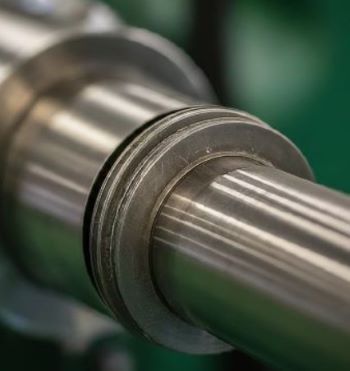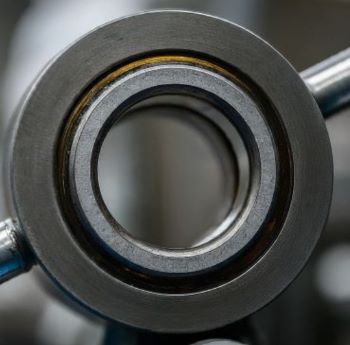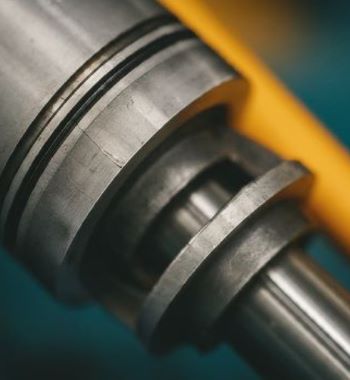Hydraulic systems play a crucial role in driving machinery across various industries, from construction and agriculture to manufacturing and transportation. Their ability to transmit power efficiently and precisely makes them a versatile solution for diverse applications.
However, maintaining stability within these systems is paramount for ensuring optimal performance and safety. This is where the hydraulics – retaining rings – come into play.
What are Retaining Rings?
Retaining rings, also known as circlips or snap rings, are simple yet crucial fasteners used in various industries, including hydraulic systems. They are typically made of metal and come in two main types:
➡️ Internal retaining rings
➡ These fit within a groove on a shaft to prevent it from moving axially (in and out).
➡️ External retaining rings
➡ These sit within a groove on a housing to prevent a shaft or other component from moving axially out of the housing.
Their primary function is to secure components in place, preventing unwanted movement and ensuring proper positioning. They achieve this by:
➡️ Snapping into a designated groove with their specific shape and material properties.
➡️ Creating a “shoulder” effect that restricts movement of the component beyond the groove.
Here are some key benefits of using retaining rings:
➡️ Simple and cost-effective compared to other fastening methods.
➡️In most circumstances, the installation and removal process is straightforward.
➡️ Offer a secure and dependable grasp for a variety of components.
➡️ Offer a compact and space-saving solution compared to other fasteners.
The Role of Retaining Rings in Hydraulic Stability
Retaining rings, also known as circlips or snap rings, are simple yet vital components used in various industries, including hydraulic systems. These rings come in two main types: internal and external.
Internal retaining rings fit within a groove on a shaft, while external rings sit within a groove on a housing. Their primary function is to secure components in place, preventing unwanted movement and ensuring proper positioning.
Here’s how retaining rings contribute to hydraulic stability:
➡️ Preventing Shaft Misalignment:
Shafts are crucial components in transmitting power within hydraulic systems. Shaft misalignment causes inefficiencies. It also leads to more wear and even equipment failure. Retaining rings secure shafts in place. They keep the shafts from misaligning and ensure smooth operation.
➡️ Maintaining Proper Positioning of Bearings and Seals:
Bearings and seals play a critical role in reducing friction and preventing leaks within hydraulic systems. Retaining rings keep parts secure. They stay in their places and avoid dislodging due to vibration or pressure. This, in turn, maintains optimal system performance and prevents fluid leaks.
➡️ Securing Pistons and Valves within Cylinders:
Pistons and valves are key parts in hydraulic cylinders. They make force and control fluid flow. Retaining rings secure these parts in the cylinder. They stop them from moving out of position and ensure proper operation. This contributes to maintaining consistent pressure and flow within the system.
For a deeper knowledge on hydraulic fittings, visit these resources ⬇️⬇️⬇️
Blind Plugs: The Key To Pipe Protection
Maximize Your Hydraulic Flow With Wye Fittings
Choosing the Right Retaining Ring for Hydraulic Applications
Selecting the appropriate retaining ring for your specific hydraulic application is crucial. Here are some important considerations to consider.
➡️ Material Properties:
The material used for the retaining ring should be strong enough to withstand the forces exerted within the hydraulic system. Common materials include stainless steel, carbon steel, and phosphor bronze. Each material has different strength and corrosion resistance. It’s crucial to choose the one best suited to your application.
➡️ Ring Size and Type:
Retaining rings come in various sizes and types. For example, spiral, wave, and constant section. They suit different shaft diameters and groove shapes. Choosing the correct size and type ensures proper fit and functionality within your hydraulic system.
➡️ Installation and Removal Requirements:
Consider the ease of installation and removal when selecting a retaining ring. Some types, like external snap rings, may need special tools to install and remove. This can matter, depending on how easy it is to reach and maintain your system.
It’s also crucial to stress the need for high-quality retaining rings. They should be from reputable manufacturers. These rings undergo tough tests to ensure they meet strength and performance standards. This contributes to the reliability and safety of your hydraulic system.
Conclusion
Retaining rings, though seemingly simple components, play a vital role in ensuring the stability and performance of hydraulic systems. They secure components in place and prevent misalignment. They keep critical elements properly positioned. This is key to efficient and safe operation.
When choosing retaining rings for your hydraulic applications, consider the material. Also, consider the size and type. Also, consider installation needs. Doing so will ensure your system lasts. For specific advice on choosing the right retaining ring, consult with engineers or industry pros.
Post time: Apr-16-2024




